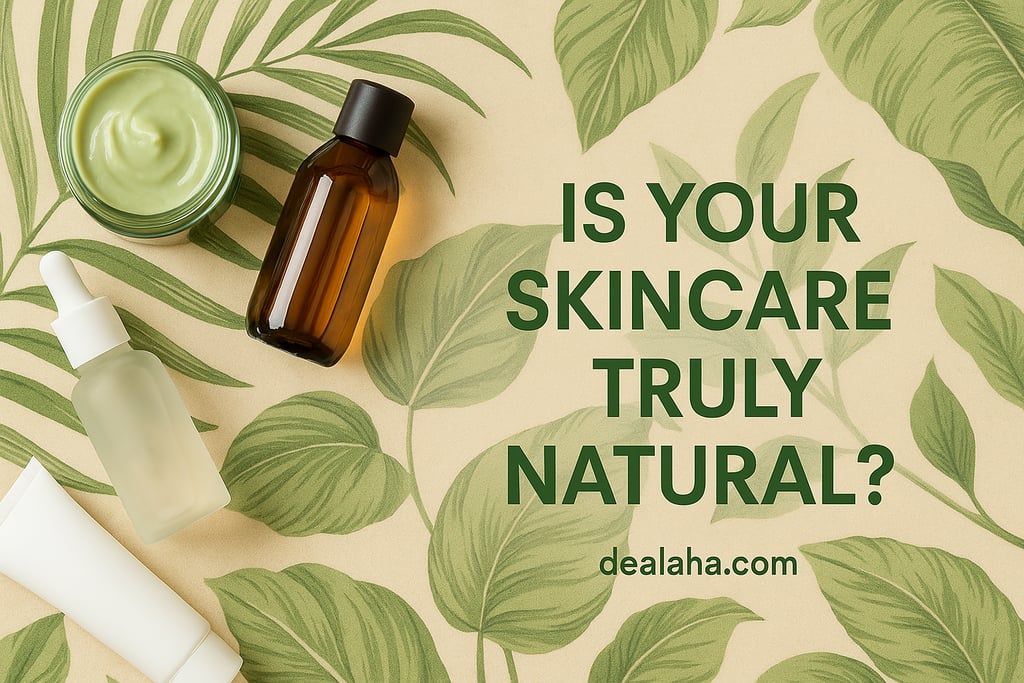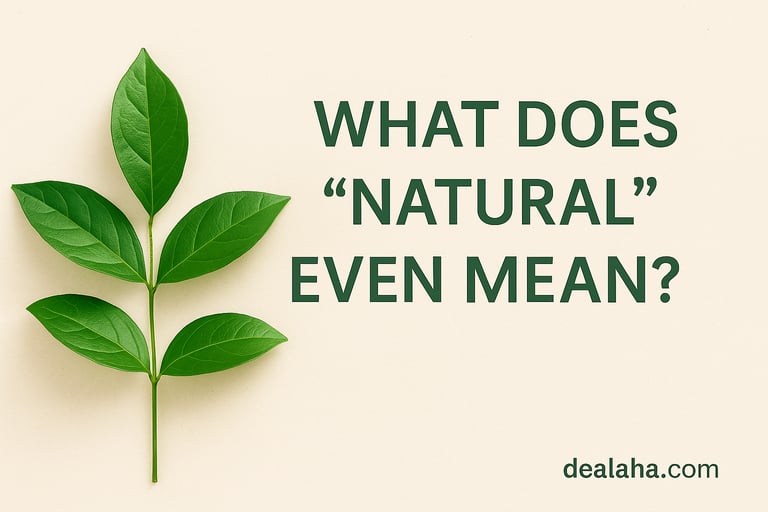The Problem with “Natural” Labels in Beauty Products
Natural sounds safe. Pure. Healthy. But when it comes to skincare, "natural" might not mean what you think it means. From green packaging to botanical buzzwords, the beauty industry loves to use the word “natural.” And why wouldn’t they? It sells. But here’s the truth: there’s no universal standard or legal definition for what makes a product “natural.” Let’s break down what this really means — and how to protect your skin (and your wallet).
SKINCARE & CLEAN BEAUTYWHAT WE RECOMMEND
5/13/20252 min read


🌱 What Does “Natural” Even Mean?
Spoiler: it depends on who’s using the word.
There’s no strict regulation around the term “natural” in most countries. That means:
A brand can label a product “natural” even if only 1–2 ingredients come from plants.
The remaining 90% of the formula can still contain synthetic fragrances, silicones, or preservatives.
There’s no legal obligation to back up the claim.
So, while the label might say “natural,” it doesn’t guarantee anything about the product’s safety or sourcing.
🚩 The Rise of Greenwashing
Greenwashing is when a brand markets itself as eco-friendly or natural without actually backing it up.
It shows up in:
Packaging with leaves, earth tones, and words like “eco,” “pure,” “clean,” or “plant-based”
Vague phrases like “chemical-free” or “toxin-free”
No certifications, no ingredient transparency, no proof
Greenwashing preys on your desire to make better choices. It gives a comforting illusion — but doesn’t always deliver on what it implies.


🧴 Why It Matters — For Your Skin and the Planet
When you buy into the word “natural,” thinking it means safe, you might actually be:
Exposing sensitive skin to irritating essential oils or allergens
Using products with undisclosed preservatives or synthetic stabilizers
Supporting unsustainable harvesting of plant materials that damage ecosystems
“Natural” doesn’t automatically mean better. And in many cases, it can mean less tested, less stable, and less effective.
🕵️♀️ Red Flags to Watch For
Here’s how to spot a misleading “natural” label:
No full INCI list (International Nomenclature of Cosmetic Ingredients)
No third-party certifications like ECOCERT, COSMOS, or EWG Verified
Lots of marketing language, but no ingredient breakdown
Uses synthetic fragrance, PEGs, parabens, or harsh preservatives alongside “natural extracts”
✅ What You Should Look For Instead
True clean beauty is about safety, transparency, and intention. Look for:
Full ingredient disclosure
Independent certifications
Brands that link to sourcing or formulation details
Reviews that reflect real user experiences
Minimalist formulas that are clear about what each ingredient does
🧬 Clean ≠ 100% Natural — And That’s OK
Some of the safest, most effective ingredients are synthetically derived but biologically identical to natural ones.
For example:
Lab-made hyaluronic acid = intense hydration
Synthetic niacinamide = brightens without irritation
Encapsulated retinol = gentler and more stable
Clean doesn’t mean 100% plant-based. It means safe, non-toxic, and science-backed.
💡 Final Thoughts
It’s time to stop being seduced by the word “natural” — and start demanding truthful beauty.
Because your skin deserves better than clever marketing.
✨ Want truly clean skincare?
Explore brands that lead with transparency, not trendy claims — and make your routine smarter, not just prettier.
Quality You Can Trust
Discover handpicked, high-quality products that support a healthier, more intentional lifestyle.
Contact
Stay in the Loop
© 2025 Dealaha™ All rights reserved.
